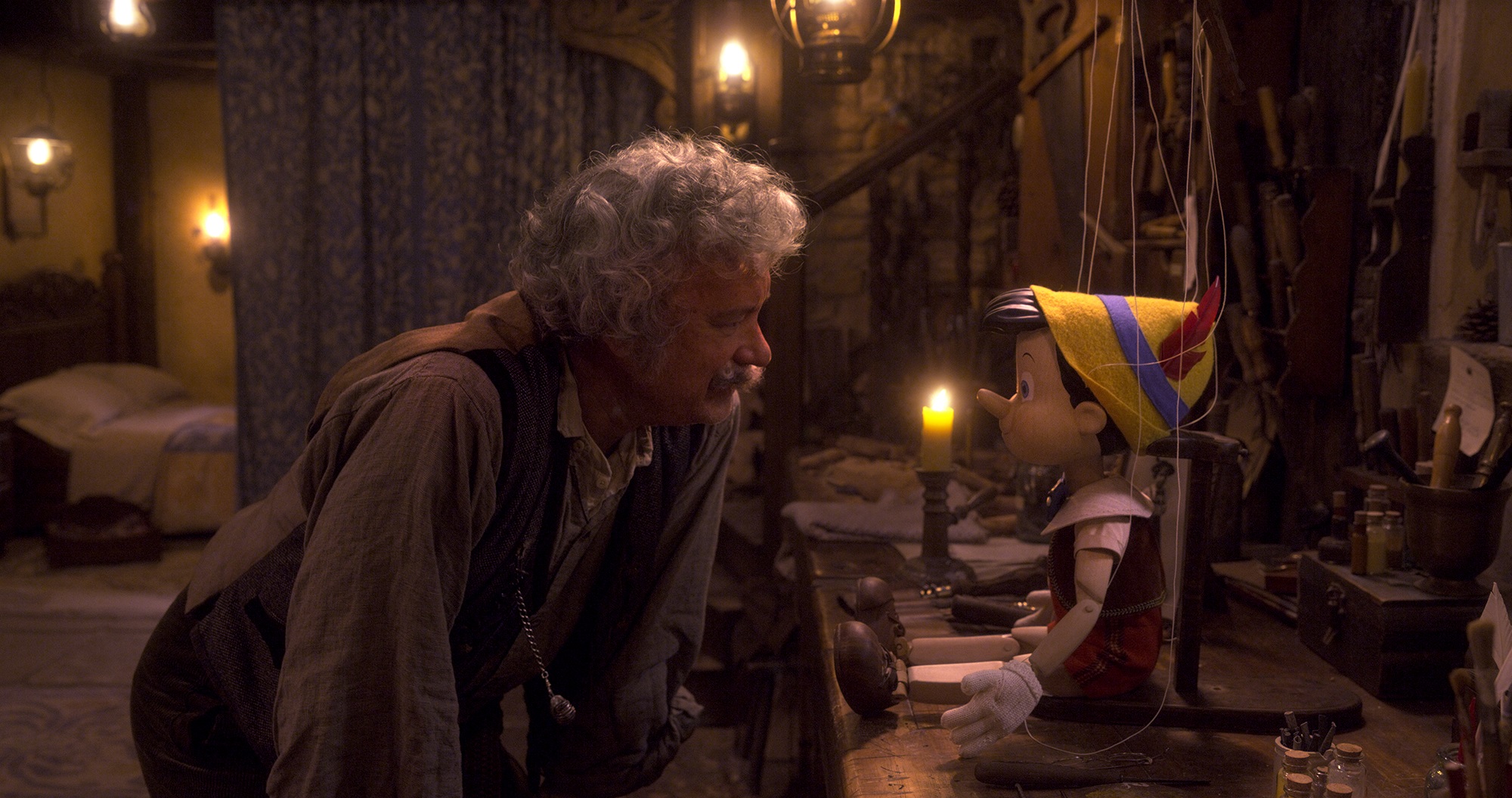Live-Action ‘Pinocchio’ Leverages Blackmagic Design, Unreal For Massive Virtual Production
The retelling of the children’s classic relied on specially built virtual production carts with Ultimatte 12s

FREMONT, Calif.—Disney employed Blackmagic Design’s Ultimatte 12 real-time compositing processors and HyperDeck Studio 4K Pro broadcast decks as part of its massive virtual production workflow for the live-action version of “Pinocchio,” the company said this week.
Starring Tom Hanks as Geppeto, the CGI retelling of “Pinocchio” required one of the largest virtual production workflows ever used for a feature film, which included several massive sets at Cardington Stage in London.
Jim Geduldick, director of virtual production and senior vice president of Dimension North America, supervised virtual production. He and his team integrated Simulcam, the live compositing of virtual objects with live action, with Unreal Engine’s real-time 3D CGI creations, allowing any crew member or actor to control or react to virtual objects in real time.
While this approach has been used on previous projects, none were of the scale necessary for “Pinocchio,” Blackmagic Design said.
To address the massive undertaking, Geduldick created several virtual production carts built around Ultimatte 12 advanced keyers, Ultimatte Smart Remote 4 and HyperDeck Studio 4K Pros that could be moved anywhere they were needed on set, the company said.
“No one had ever tried to do this across multiple sets for three months straight,” said Geduldick. “There was so much happening each day, and we had to make sure we could get a cart wherever and whenever they were needed. We could not have done that without Ultimatte and HyperDeck.”
Initially, Geduldick used two Ultimatte 12s per Simulcam feed, but with software improvements Blackmagic Design made to the keyer, he was able to use a single Ultimatte 12 per Simulcam setup by the end of the production, the company said.
Get the TV Tech Newsletter
The professional video industry's #1 source for news, trends and product and tech information. Sign up below.
“The workflow used Simulcam with layers of augmented CG layers and Ultimatte 12 as the keyer. The images were then integrated into Unreal Engine in real time. We could do front plates and back plates through a single Ultimatte, and we relied on the Ultimatte’s hardware-based processing to send a real-time key to Unreal,” he said.
“You can’t beat Ultimatte’s hardware-based real-time keying. Offloading to hardware saves so much data use that is needed elsewhere on set.”
The workflow relied on the HyperDeck Studio 4K Pros to create custom playlists along with basic playback and recording. This enabled a workflow in which virtual elements and specific lighting setups could be played back through Unreal Engine, the company said.
“The Simulcam and Ultimatte workflow was amazing,” he said. “The DP, VFX supervisor and camera operators would know where they were landing because they could see it using Ultimatte. Lighting and atmospheric decisions could be done right on set
“Virtual production only works if you can react and make creative decisions in real time, and that is what the Blackmagic Design products allowed.”
More information is available on the company’s website.
Phil Kurz is a contributing editor to TV Tech. He has written about TV and video technology for more than 30 years and served as editor of three leading industry magazines. He earned a Bachelor of Journalism and a Master’s Degree in Journalism from the University of Missouri-Columbia School of Journalism.

